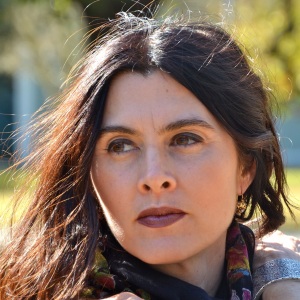What can we learn from Kimberly Meyer’s The Book of Wanderings?
May 1, 2015, by Sara Balabanlilar
A big congratulations to Kimberly Meyer, whose memoir The Book of Wanderings came out this March. Kim holds a PhD from the University of Houston Creative Writing Program, where she received an Inprint Brown Foundation Fellowship and an Inprint Michener Fellowship. Her work has recently appeared in The Best American Travel Writing, Ploughshares, The Kenyon Review, Ecotone, The Oxford American, The Georgia Review, Agni, The Southern Review, and Third Coast. She teaches in the Great Books program at the University of Houston Honors College. Here, Sara Balabanlilar, Kim’s student (and Inprint’s newest blogger) talks about The Book of Wanderings and what we can learn from it.
 Houston is a city filled with the angst of constant coming and going. Old buildings fall into disrepair and are easily replaced with three-story condos overlooking huge unused lots or old factories. Paved roads shift and crack in our sandy soil, which is persistent enough to keep any street too smooth for too long. The construction is endless here. All of these things lend to an air of constant change, of dissatisfaction with the space around us and the constant impetus to evolution and growth.
Houston is a city filled with the angst of constant coming and going. Old buildings fall into disrepair and are easily replaced with three-story condos overlooking huge unused lots or old factories. Paved roads shift and crack in our sandy soil, which is persistent enough to keep any street too smooth for too long. The construction is endless here. All of these things lend to an air of constant change, of dissatisfaction with the space around us and the constant impetus to evolution and growth.
 At first, Kimberly Meyer’s The Book of Wanderings seems to be in a similar vein of longing. In the first few pages, she describes an early trip to a chapel in New Mexico: “The chapel became a sign of what we were seeking in traveling with our daughters: remnants of something genuine that suburban sprawl had not yet swallowed up in its ravenous maw.”
At first, Kimberly Meyer’s The Book of Wanderings seems to be in a similar vein of longing. In the first few pages, she describes an early trip to a chapel in New Mexico: “The chapel became a sign of what we were seeking in traveling with our daughters: remnants of something genuine that suburban sprawl had not yet swallowed up in its ravenous maw.”
When Meyer’s small trips around the U.S. turn into a grander trip with her oldest daughter, Ellie, following the journey of a prolific medieval friar, her goal remains the same. She follows Felix Fabri’s journey as closely as she can, visiting chapels, churches, and pilgrimage sites just as he did. Her route starts near Fabri’s hometown of Ulm, then quickly moves into Italy, along the coast of eastern Europe, down through Greece into Israel and eventually Egypt. However, Meyer’s efforts to mirror Fabri’s tracks are undercut almost immediately, and regularly again throughout the trip. In Italy, she and Ellie get sick. Later, their guide through the desert turns out to have dubious plans for them. The idea of recreating perfectly a centuries-old pilgrimage path becomes imperfect.
Still, the two press on through the increasingly politicized combat-torn landscape. Meyer is in search of active faith and devotion, in search of an understanding of their shared experience, echoing with her cast-off college vision of herself as a “bohemian-explorer-intellectual” hopeful. Though the literal qualities of pilgrimage sites fall flat for Meyer, it is her journey, and connection with other travelers, that holds true to her vision of Fabri’s pilgrimage. She finds unorthodox holiness in her conversations not in the literalism of reliquaries and sites of age-old miracles, but with guides and locals who live amongst them.
What is unusual, and good, about Meyer’s book is that it doesn’t end up being merely a travelogue— I took this path, I didn’t take that one, I remembered to pack extra protein bars — but instead is an ode to the tentative relationship one must hold between home and travel.
What is unusual, and good, about Meyer’s book is that it doesn’t end up being merely a travelogue — I took this path, I didn’t take that one, I remembered to pack extra protein bars — but instead is an ode to the tentative relationship one must hold between home and travel. Once the two are back in Houston, Ellie is unable, or unwilling, to remember details from their journey. She is ready to move into her own apartment in Austin and toward her own independent journey. Meyer suggests that perhaps we are imbued with movement even through the end of our life. She calls us to remember that nothing is very far. Even as she lives in Houston, moored by details like her teakettle on the stove, memories of Venice, Jericho, and the Sinai desert remain. We don’t learn until almost the very end that the historical figure of her fascinations, Fabri, wore his pilgrim’s robe on his deathbed.
The opposite, though, is also true. A local band was recently called to a popular late-night show in New York City to perform. The camera tracked over the band members and momentarily caught on the bass drum, printed with a map of Houston’s freeways. We carry a map of sprawl in our hearts, outlines of the beltway and Katy freeway within us as we go. As Houstonians, we are born into a sprawl of discontent. Meyer’s book is a call for us to live in this city, not satisfied, but with a love for all that discontent we carry with us.

